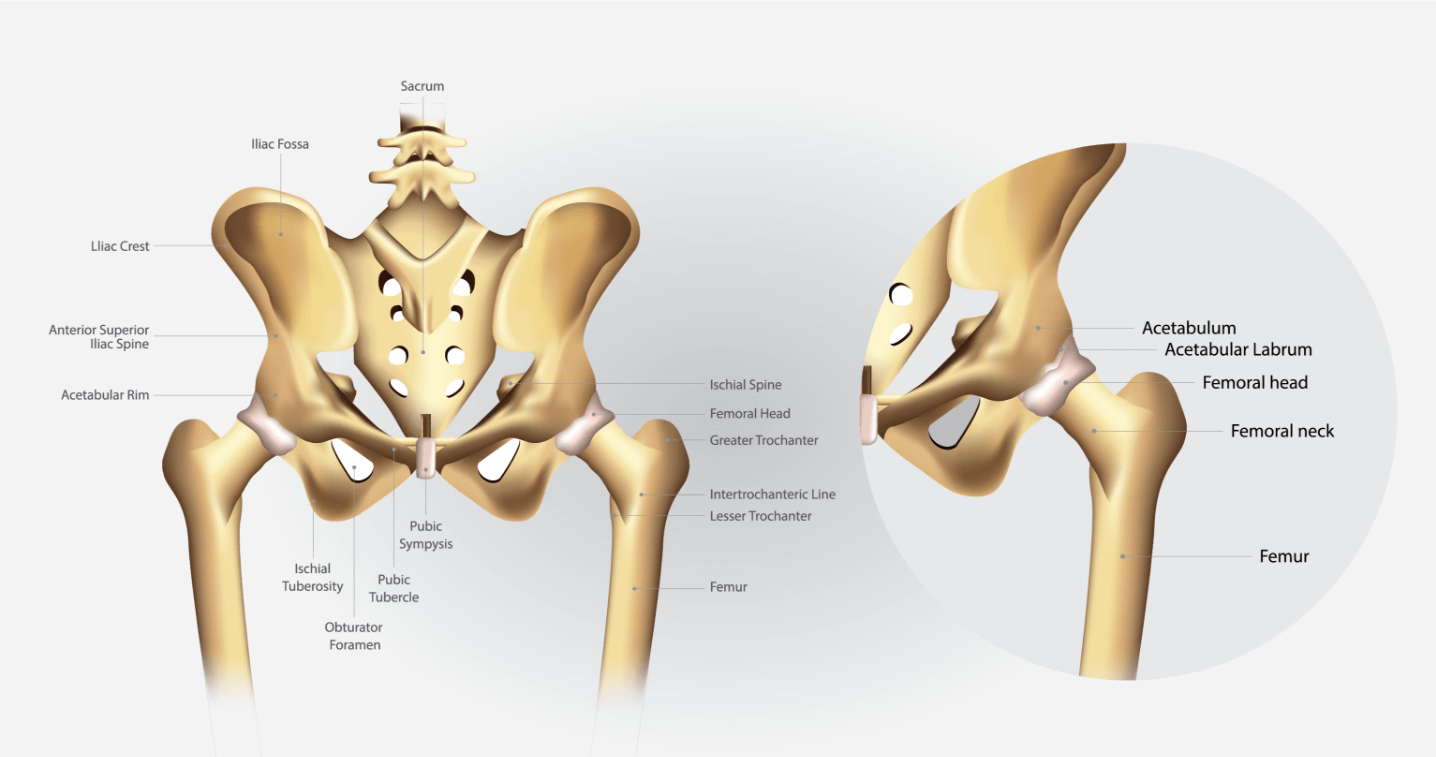Total Hip Replacement Surgery
What is Total Hip Replacement Surgery?
Total hip replacement surgery, also known as total hip arthroplasty, is a highly effective procedure designed to address hip pain and restore function. In this surgery, damaged bone and cartilage are removed and replaced with prosthetic components. This procedure aims to alleviate pain, enhance mobility, and allow individuals to resume their daily activities.
The Anatomy of the Hip
The hip, a robust ball-and-socket joint, comprises the acetabulum (socket) formed by the pelvic bone and the femoral head (rounded upper part of the thighbone). Articular cartilage covers these surfaces, ensuring smooth movement. Ligaments and the hip capsule provide stability, while the synovial membrane produces lubricating fluid. This intricate anatomy is crucial for normal hip function.
Why Total Hip Replacement?
Total hip replacement is a surgical procedure that can effectively relieve pain, improve joint function, and enhance the overall quality of life for individuals suffering from hip conditions such as arthritis, hip fractures, or other degenerative disorders.
Conditions that can make hip replacement surgery necessary include:
- Osteoarthritis, also known as wear-and-tear arthritis, a condition that disrupts the protective cartilage covering bone ends, impeding smooth joint movement.
- Rheumatoid arthritis, an autoimmune disorder, triggers inflammation that can damage cartilage and, in severe cases, the underlying bone, leading to joint deformities.
- Osteonecrosis, a condition where insufficient blood supply to the hip joint's ball portion causes bone collapse, may result from dislocation or fracture.
- Childhood hip disease, a range of complications that occur during childhood and may cause arthritis later in life to due abnormal hip growth.
If hip pain persists despite medication, worsens during walking, disrupts sleep, hinders stair navigation, or impedes rising from a seated position, hip replacement becomes a viable consideration to alleviate discomfort and restore functionality.
The Surgical Process
The surgical process of total hip replacement involves the replacement of damaged bone and cartilage with prosthetic components. The extracted impaired femoral head is substituted with a metal stem inserted into the hollow core of the femur. The femoral stem can be affixed to the bone using either cement or a "press fit" technique. The decision on which method is used is determined by a number of factors, such as the quality and strength of the patient's bone. On the upper portion of the stem, a metal or ceramic ball is affixed, serving as a replacement for the removed damaged femoral head. Simultaneously, the damaged cartilage surface of the socket (acetabulum) is excised and substituted with a metal socket, which may be secured in place using screws or cement. To facilitate a seamless gliding surface, a spacer made of plastic, ceramic, or metal is introduced between the new ball and the socket.

Risks
While the rate of complications following hip surgery is low, they can occur, prolonging or limiting a full recovery. Early detection and management are crucial in addressing these issues, potentially requiring additional surgery. Risks of total hip arthroplasty can include:
- Infection - This may exist at the entry of the wound or deep around the prosthesis. Depending on the extent and depth of the infection, further surgery may be required.
- Blood clots - These can form in the veins and can be dangerous if they travel to the lungs. The orthopaedic surgeon will provide a prevention program to reduce the risk of these occurring or worsening.
- Misaligned leg length - Following total hip arthroplasty, one leg may be noticeably shorter than the other due to the biomechanics stabilisation of the hip. A shoe lift may make a patient feel more comfortable following surgery.
- Dislocation - For the first few months following surgery, while the tissues are healing, there is a chance that the ball can come out of the socket.
- Wear-and-tear of implant - The hip prosthesis can wear out or loosen over years of use. If this induces pain in the patient, a revision surgery may be necessary.
Outcomes
Adapting to a prosthetic hip can be a foreign experience. Patients will typically experience some numbness around the incision and stiffness, particularly because of frequent bending. This will typically improve over time and become less noticeable.
Preserving the hip replacement is important in enhancing its longevity. This can be promoted by engaging in regular, light exercise to maintain flexibility, mobility and strength of the new hip. Being cautious about falling or incurring an injury is important to prevent the possibility of additional surgery on the hip.
Recovery
Following the post-surgery home care guidance and instructions of the orthopaedic surgeon in the weeks after total hip arthroplasty is instrumental in a successful recovery process. This may outline a number of problems and how to avoid them. For example, preventing infection, avoiding falls, and other precautions. Periodically visiting the orthopaedic surgeon for follow-up examinations and X-rays is essential.
Reclaim your life from persistent hip pain. Schedule a consultation here with our expert orthopaedic surgeon to explore the transformative benefits of total hip replacement and take the first step toward a pain-free tomorrow.
Advanced, patient-centred technology for better outcomes.
Contact us via the contact page or chatbot available across our website and Dr Yas will respond promptly.
